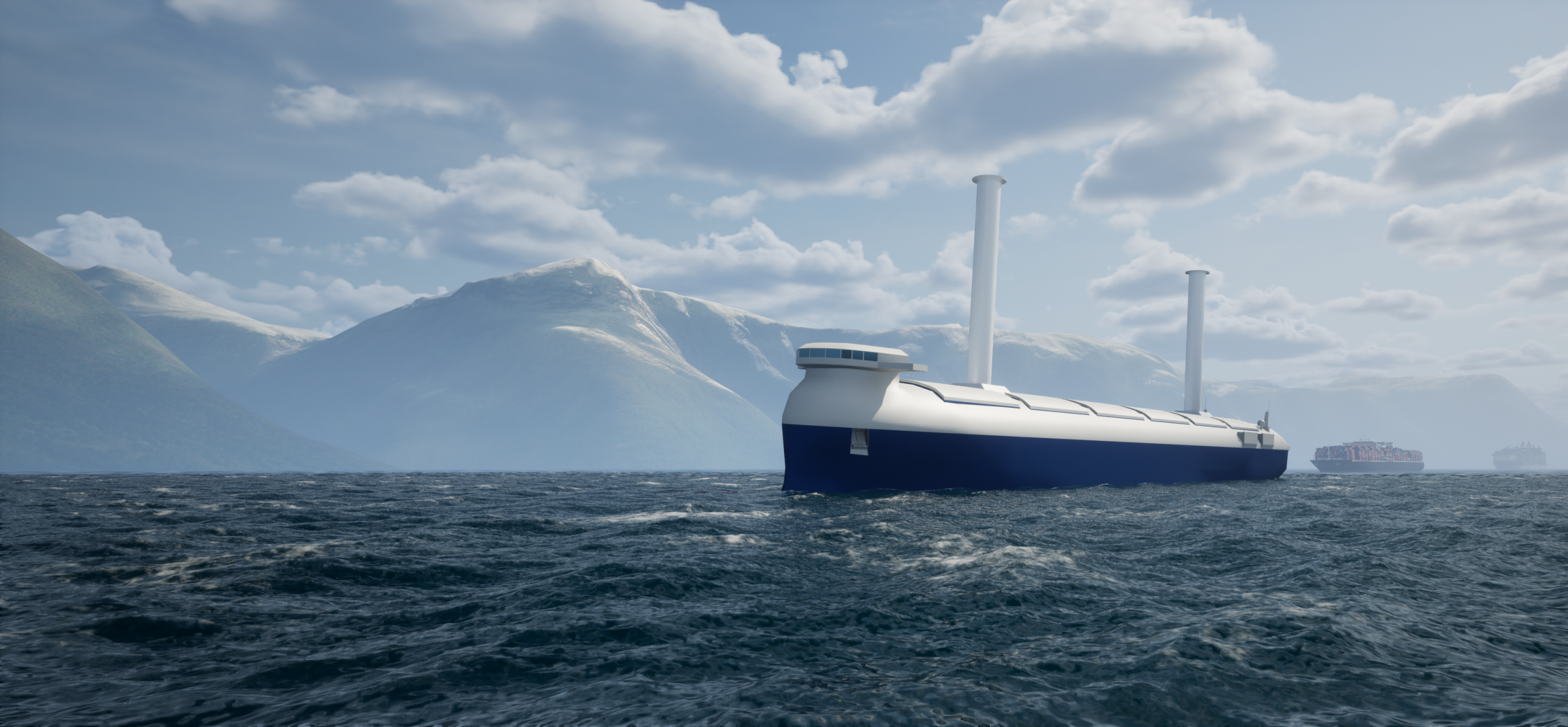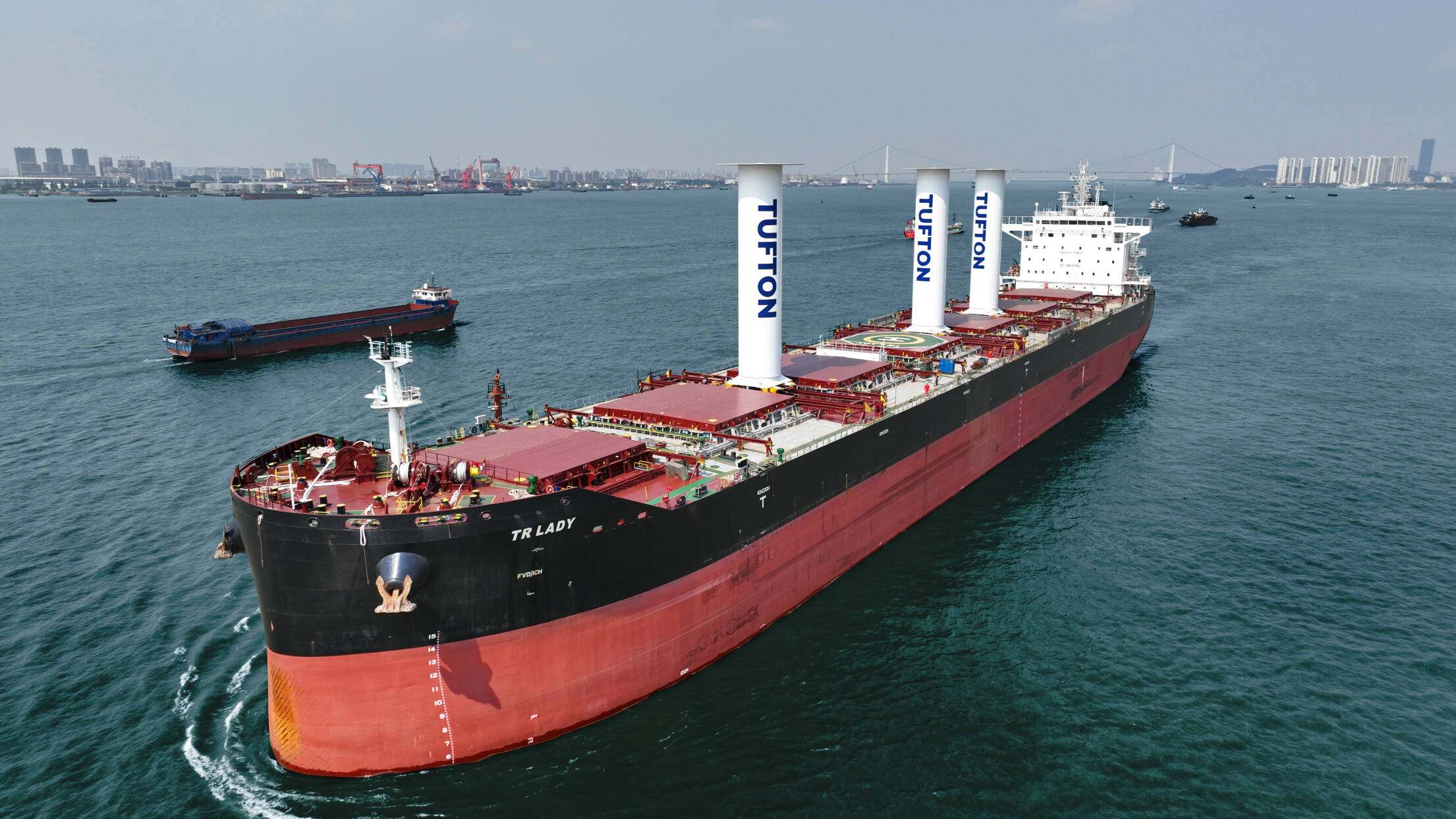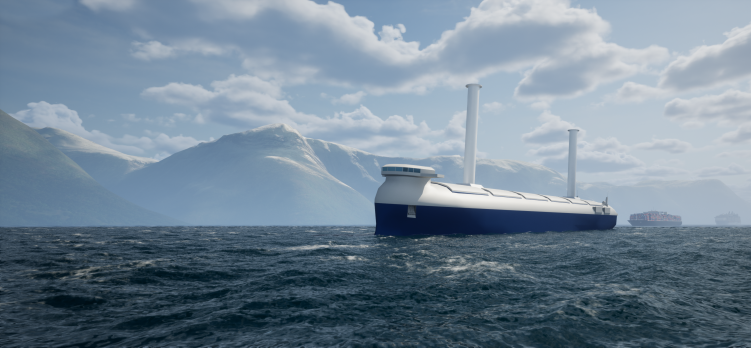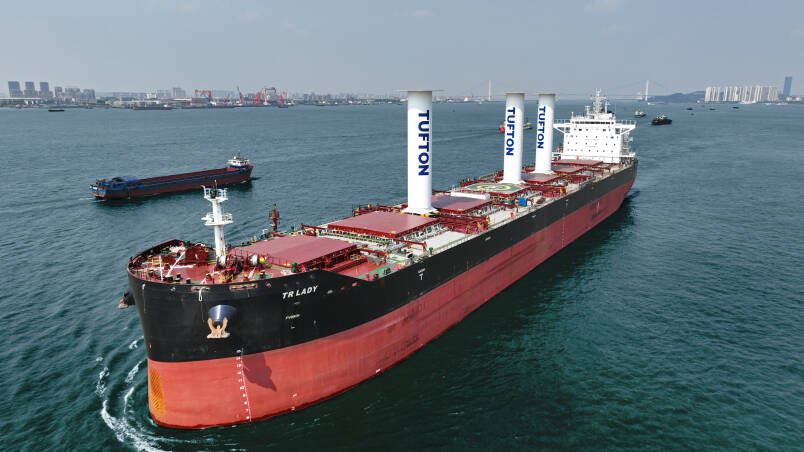News
Shallow water
EEXI
Wind propulsion
Turbulent breakthrough
CFD VIM
Floating Wind
Shortsea shipping
Cover
Create a MARIN account to stay updated

Onboard trial and/or monitoring data will be used to compare against simulations (Picture Anemoi Marine Technologies).
December 2023, no. 138




More info
WiSP3
But there is still a lot of knowledge to gain. Tools and standards can certainly be developed further and there is still a large gap when it comes to rules and regulations. Therefore, a follow-up project is being launched: WiSP3. In this third JIP we propose to continue our approach, focusing on case- and sensitivity studies and ships with a substantial contribution from wind propulsion. We aim to:
Dig into various methods to consider routing at the design stage where routing will also be implemented in Blue Route (along with performance calculations more suitable for a large contribution from wind propulsion).
Further refinement of performance predictions, including wind gusts, aerodynamic boundary layers, changed propeller load, pressure side cavitation and manoeuvring. With regards to seakeeping, we will look at the second-generation intact stability criteria. Finally, the ability of actual onboard control systems to deliver the (ideal) control as commonly assumed in predictions, will also be under scrutiny. Onboard trial and/or monitoring data will be used to compare against simulations.
EEDI and contract sea trial methods, monitoring and validation of numerical predictions, will also be investigated.
Regulatory analysis will continue, with the focus on aligning with class rules.
Please join – input welcomed!
The topics listed above were based on valuable input from WiSP2 participants. However, the new project is open for all and we welcome input from new participants. If you have interesting cases, then we may be able to work on those as part of the project. Please contact our JIP Manager Patrick Hooijmans with feedback or new ideas or to have your name put on the mailing list to be informed about upcoming preparation meetings. The kick-off is planned for April 12, 2024, during BlueWeek in Venice.
Progress so far:
New draft standards in ITTC were partly inspired by WiSP knowledge.
Discrepancies between (EEDI/EEXI) design predictions and actual operational conditions were highlighted. The influence of routing attracted specific attention (see Report magazine 137).
The impact wind propulsion has on manoeuvring and seakeeping and how to interpret regulations was explored. Secondly, the potential influence of using wind propulsion to help steer the vessel was shown.
MARIN’s partner ABS reviewed existing rules and regulations for aspects where these do not adequately address ships with wind propulsion.
A cloud-based performance prediction tool
Blue Route (marin.nl) was introduced with exclusive features for WiSP2 participants.In the remaining months of the WiSP2 project we are completing a validation case of performance predictions using on board monitoring data.
In short, we can say it was a big success!
Additionally, the first few ships are now being ordered with primary wind - the contribution from wind propulsion exceeds 50% on average. With stricter GHG regulations still on the way and the affordable availability of (net) zero carbon fuels uncertain, it only makes sense that growth will accelerate.
However, reliable performance prediction, harmonised rules and regulations and industry standards are key to reduce uncertainties around wind propulsion. All parties involved can then make better investment and design decisions. Considerable progress was made in the WiSP(1) and WiSP2 Joint Industry Projects. We were able to increase knowledge substantially on performance prediction and rules and regulations with a range of case studies.
Report



Series of WiSP projects looking to start phase 3

Wind propulsion is steadily picking up steam with the number of commercial ships that are equipped with systems projected to reach about 50 by early 2024.


WiSP 3 Joint Industry Project


Steering with wind propulsion

Report

December 2023,
no. 138
Create a MARIN account to stay updated

Steering with wind propulsion


WiSP 3 Joint Industry Project

More info
WiSP3
But there is still a lot of knowledge to gain. Tools and standards can certainly be developed further and there is still a large gap when it comes to rules and regulations. Therefore, a follow-up project is being launched: WiSP3. In this third JIP we propose to continue our approach, focusing on case- and sensitivity studies and ships with a substantial contribution from wind propulsion. We aim to:
Dig into various methods to consider routing at the design stage where routing will also be implemented in Blue Route (along with performance calculations more suitable for a large contribution from wind propulsion).
Further refinement of performance predictions, including wind gusts, aerodynamic boundary layers, changed propeller load, pressure side cavitation and manoeuvring. With regards to seakeeping, we will look at the second-generation intact stability criteria. Finally, the ability of actual onboard control systems to deliver the (ideal) control as commonly assumed in predictions, will also be under scrutiny. Onboard trial and/or monitoring data will be used to compare against simulations.
EEDI and contract sea trial methods, monitoring and validation of numerical predictions, will also be investigated.
Regulatory analysis will continue, with the focus on aligning with class rules.
Please join – input welcomed!
The topics listed above were based on valuable input from WiSP2 participants. However, the new project is open for all and we welcome input from new participants. If you have interesting cases, then we may be able to work on those as part of the project. Please contact our JIP Manager Patrick Hooijmans with feedback or new ideas or to have your name put on the mailing list to be informed about upcoming preparation meetings. The kick-off is planned for April 12, 2024, during BlueWeek in Venice.
Onboard trial and/or monitoring data will be used to compare against simulations (Picture Anemoi Marine Technologies).


Progress so far:
New draft standards in ITTC were partly inspired by WiSP knowledge.
Discrepancies between (EEDI/EEXI) design predictions and actual operational conditions were highlighted. The influence of routing attracted specific attention (see Report magazine 137).
The impact wind propulsion has on manoeuvring and seakeeping and how to interpret regulations was explored. Secondly, the potential influence of using wind propulsion to help steer the vessel was shown.
MARIN’s partner ABS reviewed existing rules and regulations for aspects where these do not adequately address ships with wind propulsion.
A cloud-based performance prediction tool
Blue Route (marin.nl) was introduced with exclusive features for WiSP2 participants.In the remaining months of the WiSP2 project we are completing a validation case of performance predictions using on board monitoring data.
In short, we can say it was a big success!
Additionally, the first few ships are now being ordered with primary wind - the contribution from wind propulsion exceeds 50% on average. With stricter GHG regulations still on the way and the affordable availability of (net) zero carbon fuels uncertain, it only makes sense that growth will accelerate.
However, reliable performance prediction, harmonised rules and regulations and industry standards are key to reduce uncertainties around wind propulsion. All parties involved can then make better investment and design decisions. Considerable progress was made in the WiSP(1) and WiSP2 Joint Industry Projects. We were able to increase knowledge substantially on performance prediction and rules and regulations with a range of case studies.
Wind propulsion is steadily picking up steam with the number of commercial ships that are equipped with systems projected to reach about 50 by early 2024.
is gaining traction









